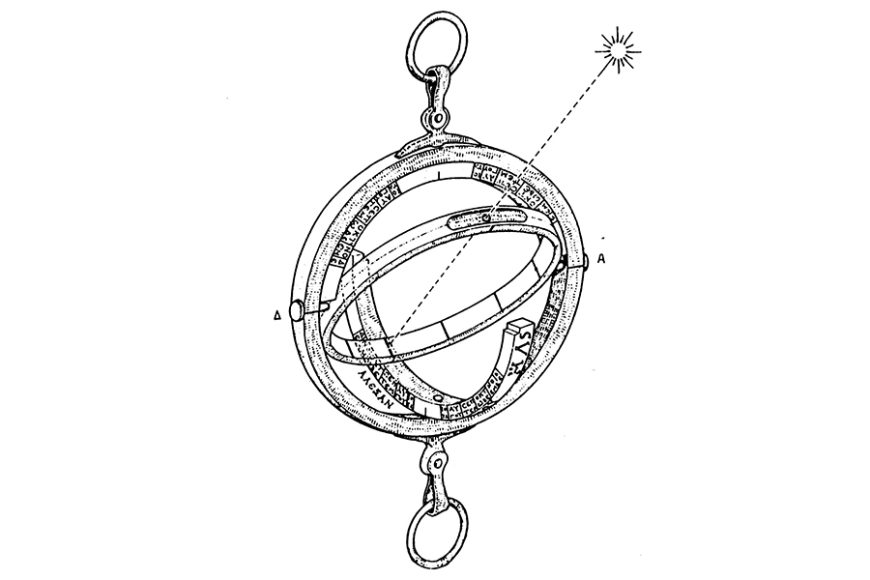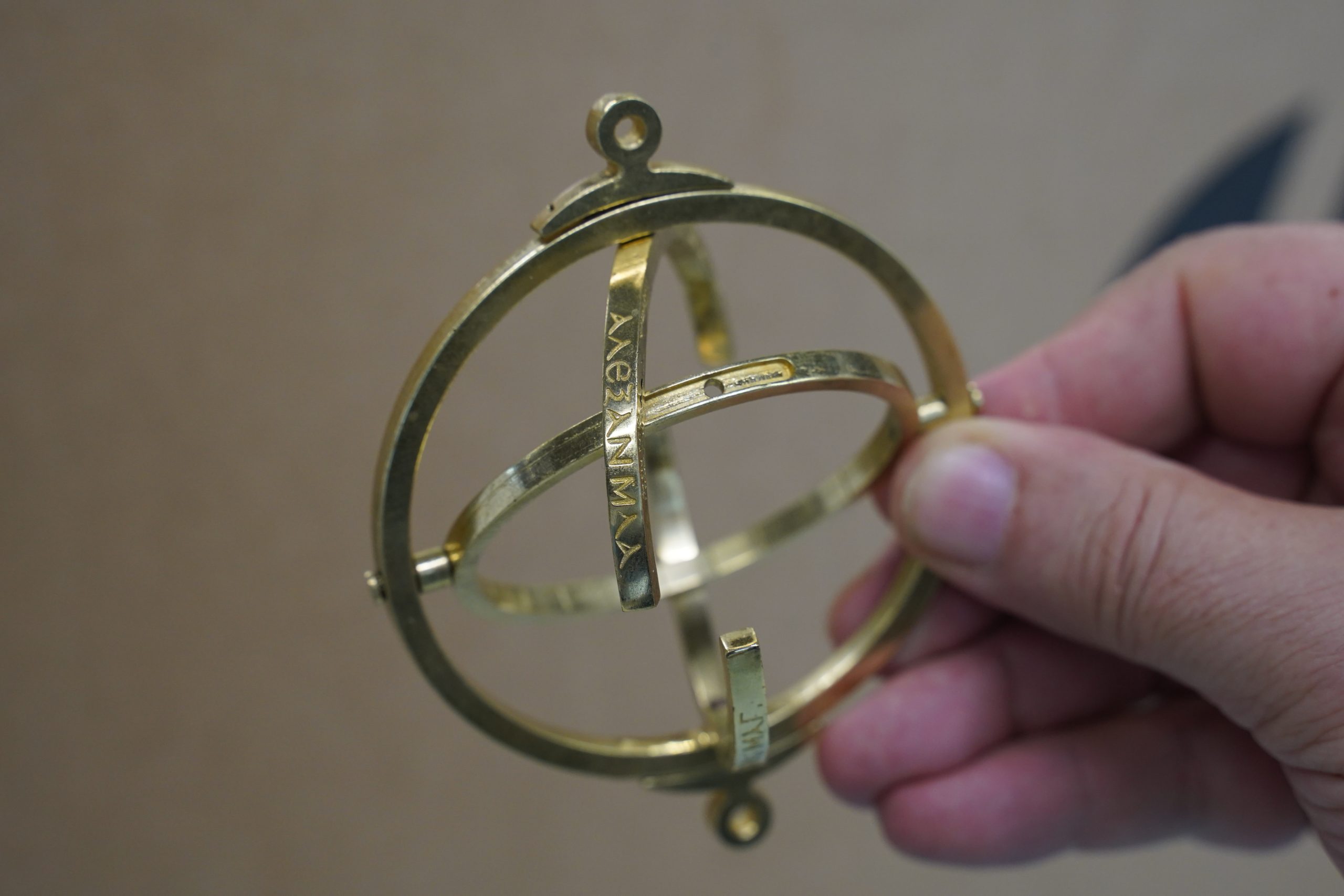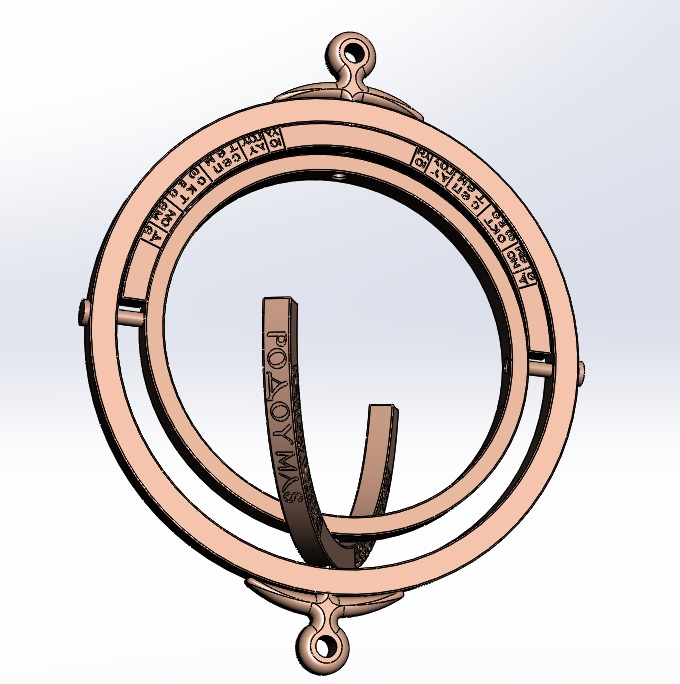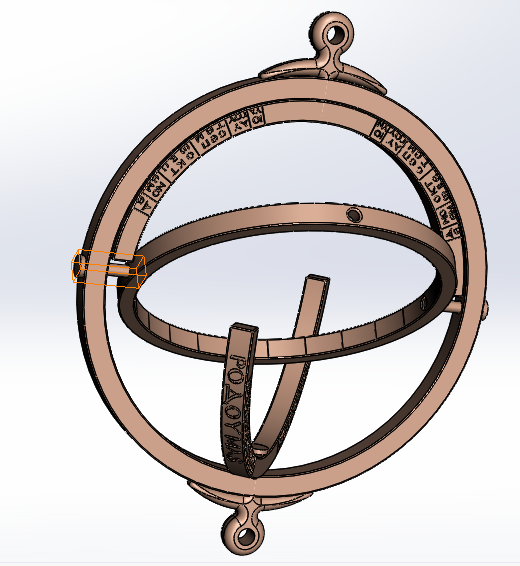A sundial is a device that indicates time by using a light spot or shadow cast, by the position of the Sun on a reference scale. Sundials have been invented independently in every major culture and became more accurate and sophisticated as each culture developed (Jones L., 2005). Expectedly, within the noosphere born in the Hellenistic era (with Alexandria as its most important center), ancient Greeks were well-positioned to develop the science (principles and forms) of sundials, having developed the science of geometry, particularly discovering the conic sections to be traced by a sundial nodus. The portable Horologion of Philippi is one of the finds from the archaeological excavation in the Octagon church of Philippi in Macedonia, Greece, which exhibits clear-cut functionality combined with unprecedented ergonomic design. Its distinctive type renders it unique in its kind, since it does resemble in common elements, but significantly differs from, the three main types of sundials developed through the science of gnomonics of the Hellenic cosmos (Gounaris G., 1978). The user of the Horologion of Philippi could not only read the local hour in the region of four cities, but also calculate the latitude of a place, as well as the horizontal coordinates (that is the azimuth and the altitude of the Sun or of another celestial object).
History and structure
Based on analyses of its epigraphic evidence, archaeologists date the construction of the Horologion of Philippi between 250 and 350 C.E. It is a circular object made of copper alloy (around 72.5 mm in diameter), consisted out of three rings placed inside each other. The inner ring carries an optometric (view) hole aiming at the sun, while the middle ring is made of two half rings, each baring various engravings bilaterally, from the center to the edges.
The first (outer) ring has an inner diameter of 64.9 mm, is 3.8 mm thick and 5 mm wide. It has no engraving or inscription, other than the holes for the shafts holding the other rings.
The two separate half-rings, which comprise the middle ring, have an external diameter of 64.5 mm, an inner diameter of 57.2 mm, thickness of 3.6 mm and width of 5 mm. They are constrained by an axis placed as a mono-block construction, with the stem through which the hoop passes allowing for complete (360 o) rotation. On the outer cylindrical surface of each semicircle, a pair of city names followed by their corresponding latitudes are engraved; «ΑΛΕΞΑΝ, ΛΑ» (Alexandria, Greece, 31o) and «ΡΟΔΟΥ, ΜΛΣ» (Rhodes, Greece, 36o) on one, and «ΟΥΙΕΝΝ, ΜΕ» (Vienne, France, 45 o) and «ΡΩΜΗ, ΜΑΓ» (Rome, Italy, 41o) on the other. On each flat side of the hemisphere, months Jan-Jun and Jul-Dec are engraved respectively, with indications laid out counterclockwise across 47 o arcs (twice the 23.5 o ecliptic tilt of the earth).
The third (inner) ring has an outer diameter of 57 mm, an inner diameter of 51.5 mm, thickness of 2.8 mm, and width of 5 mm and can rotate around a fixed axis (constrained in the outer ring) with the help of two diametrically opposed pins, obtaining a gimbal suspension (Gounaris G., 1978).
Mnemosyne’s research commitment
In the context of the “Mnemosyne” project, the ERA Chair team members will move beyond traditional documentation practices and attempt to expand data collection around the device, placing emphasis on functionality, to sufficiently capture its inherent complexity as both a timekeeping and topographical/astronomical observation instrument. The plan is to use lessons learned from the meticulous digitization in Case Study 1, and obtain yet another functioning replica in digital form. Apart from tackling key issues and technical debates troubling the scientific community (e.g. construction period, alloy composition etc.) or bringing out the artefact’s overall archaeological, historical and technological value, the DHRLab will focus on obtaining an operational digital twin that would effectively support visual interactive simulation. Such a “holistic” approach is expected to provide grounds for an exploratory environment, which could offer insight into the portable sundial’s unparallel way of work (calculating local time, latitudes, azimuth, and the altitude of the Sun, in real time) based on adaptive visualization; thus, successfully encapsulate (both as a derivative and as a distillate) the scientific spirit and technological innovation of the Hellenistic epoch.
Essential Bibliography
- Jones, L., (December 2005). “The Sundial And Geometry”. North American Sundial Society. 12 (4).
- W. Sawyer F., Bifilar gnomonics, JBAA (Journal of the British Astronomical association), 88(4):334–351, 1978
- Rohr, R.R.J., Sundials: History, Theory, and Practice. Toronto: University of Toronto Press, undated
- Marshall, R.K., Sundials. New York: the MacMillan Company, 1963.
- Gounaris, G., Χάλκινο Φορητό Ηλιακό Ωρολόγιο από τους Φιλίππους, (Bronze Portable Sundial from Philippi, in Greek), Αρχαιολογική Εταιρεία, (Ανάτυπο από την “Αρχαιολογική Εφημερίς”), Αρχαιολογική Εφημερίς, (1978) 181-191











